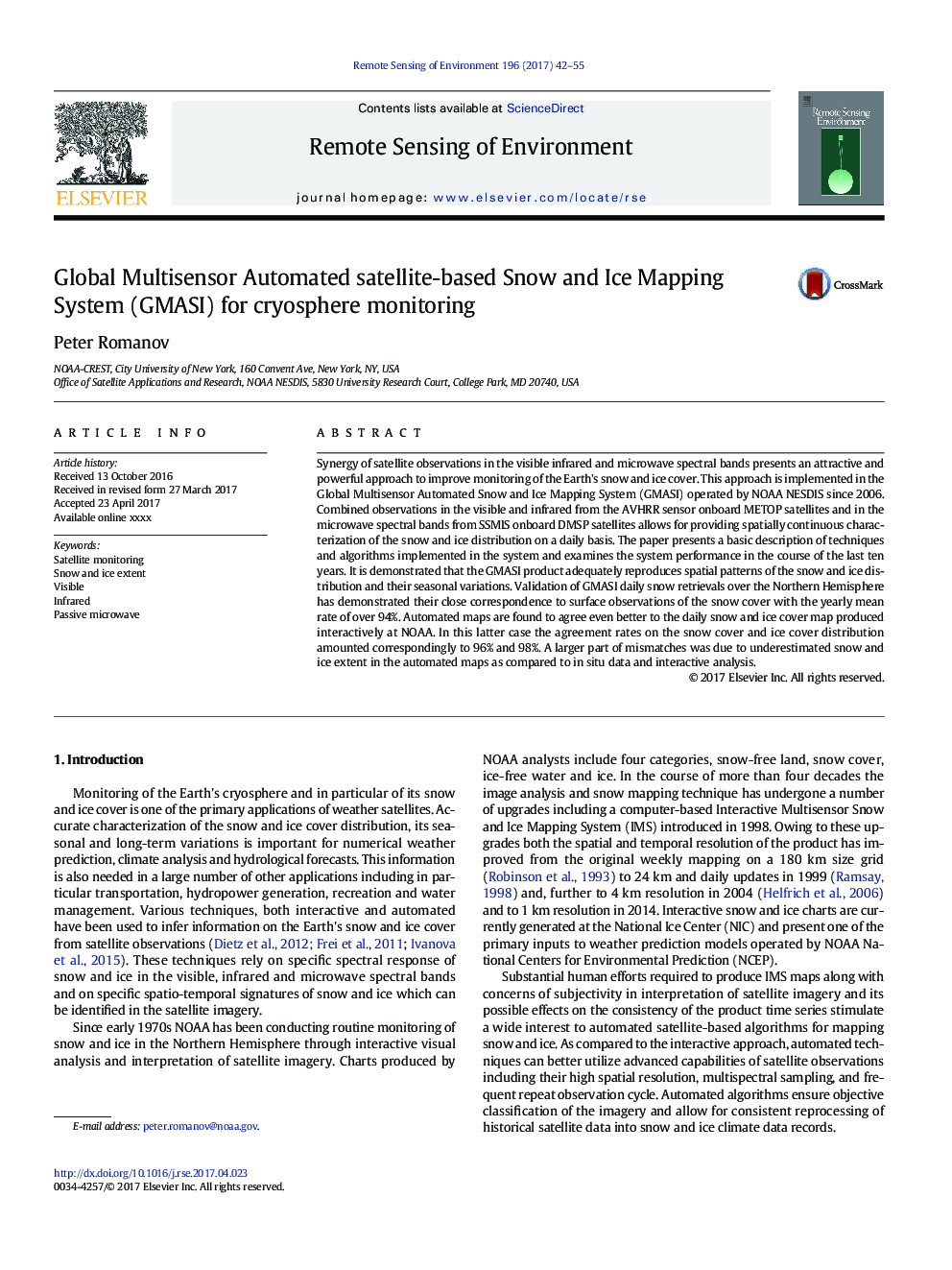| Article ID | Journal | Published Year | Pages | File Type |
|---|---|---|---|---|
| 5754957 | Remote Sensing of Environment | 2017 | 14 Pages |
Abstract
Synergy of satellite observations in the visible infrared and microwave spectral bands presents an attractive and powerful approach to improve monitoring of the Earth's snow and ice cover. This approach is implemented in the Global Multisensor Automated Snow and Ice Mapping System (GMASI) operated by NOAA NESDIS since 2006. Combined observations in the visible and infrared from the AVHRR sensor onboard METOP satellites and in the microwave spectral bands from SSMIS onboard DMSP satellites allows for providing spatially continuous characterization of the snow and ice distribution on a daily basis. The paper presents a basic description of techniques and algorithms implemented in the system and examines the system performance in the course of the last ten years. It is demonstrated that the GMASI product adequately reproduces spatial patterns of the snow and ice distribution and their seasonal variations. Validation of GMASI daily snow retrievals over the Northern Hemisphere has demonstrated their close correspondence to surface observations of the snow cover with the yearly mean rate of over 94%. Automated maps are found to agree even better to the daily snow and ice cover map produced interactively at NOAA. In this latter case the agreement rates on the snow cover and ice cover distribution amounted correspondingly to 96% and 98%. A larger part of mismatches was due to underestimated snow and ice extent in the automated maps as compared to in situ data and interactive analysis.
Related Topics
Physical Sciences and Engineering
Earth and Planetary Sciences
Computers in Earth Sciences
Authors
Peter Romanov,
